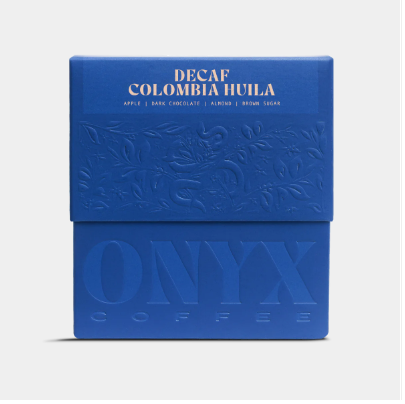
About this Coffee
Calm down with this delicious decaf from our friends in Huila, Colombia. As a decaf, this coffee performs well as both an espresso and filter. A silky mouthfeel tasting of dark chocolate and apple ends with a long and complex almond finish. This coffee has all the things we love about coffees from Huila, with none of the caffeine thanks to the sugar cane decaffeination process. Enjoy and sleep easy.
This is another excellent decaf coffee from Cafe Imports. Frequently we need a beautiful spot lot of decaf, and this one fits what we were looking for. Last season we visited Popayán, Colombia, and had the pleasure of cupping with Banexport, one of their export partners. The team at Banexport is extremely organized in their cupping protocol, cupping though thousands of micro-lots through each harvest. Coffees are chosen to build regional green coffee blends, of which some are decaffeinated. The idea of making regional blends is to highlight the predominant profile of coffees of that region, creating a sort of archetype profile. Huila regularly produces award-winning coffees, and the department’s general taste profile is known to be balanced and sweet, with dynamic acidity. The outcome of this blend is a coffee that upholds the sweetness and texture of coffee from Huila that we love, but without the caffeine.
EA DECAFFEINATION
Sugar cane ethyl acetate or commonly known as EA decaf is a natural process of decaffeinating coffee. It is usually found in Colombia where sugar cane is readily available and starts with making molasses from sugar cane. Once created, it sits in vats to ferment. The bacteria produce acetic acid, much like fermenting coffee, and at the peak of fermentation, alcohol is added to make something called ethyl acetate.
For it to be applied to coffee first, the green coffee is steamed in tanks to elevate the moisture level — the beans swell, which allows the extraction of caffeine. Ethyl acetate is added to the mixture, and it dissolves the caffeine in the coffee. The coffee is then washed with water and laid to dry. In theory, the coffee should reach the same moisture content as it arrived in, which is somewhere between 11-12%. The most important part of EA coffee, and why it tastes so sweet, is it avoids high pressure and high heat, which degrades coffee quickly. This allows the natural terroir flavors to come through, making it a sweet and bright decaf.